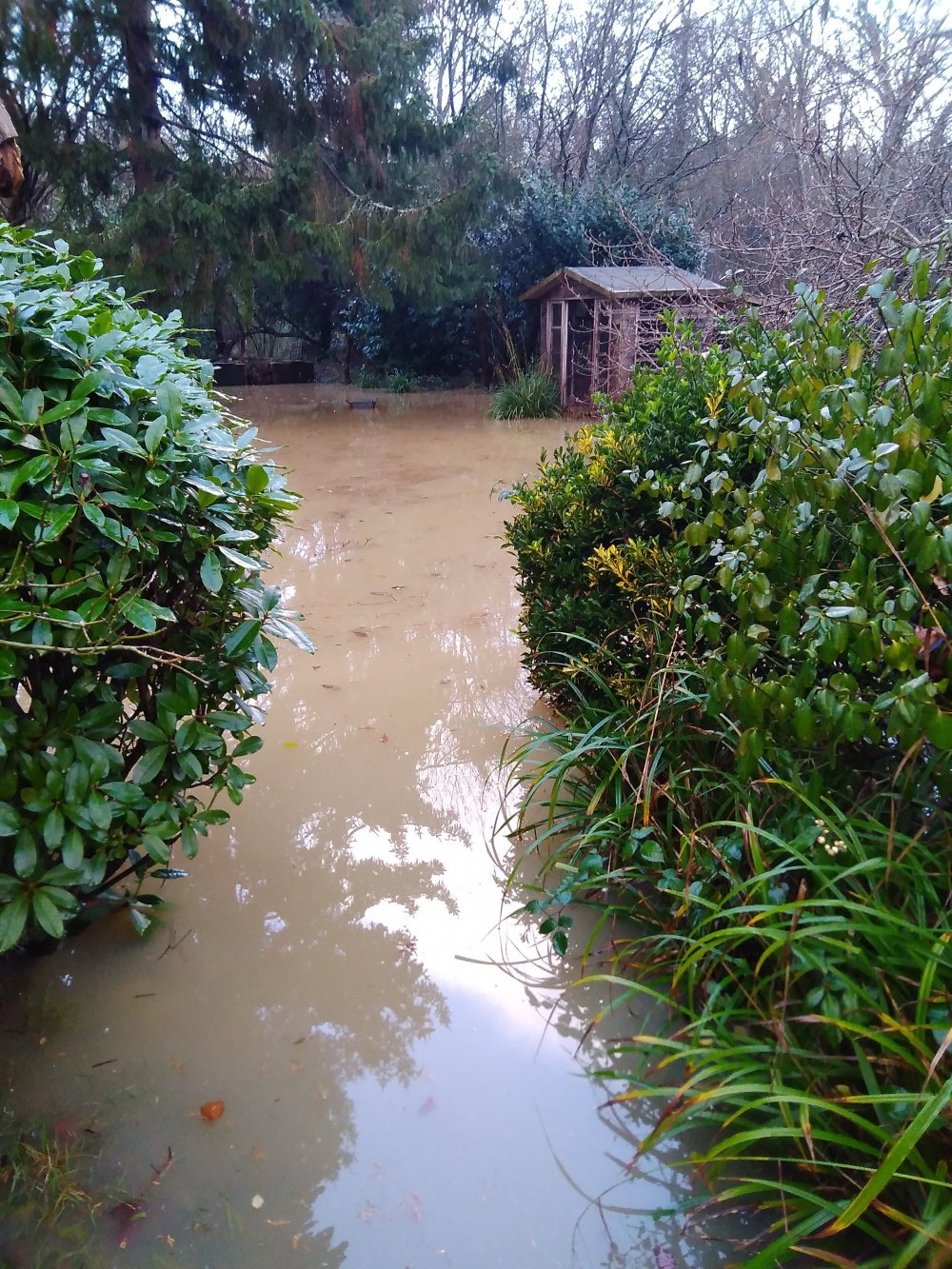This Forum will close on Wednesday 27 March, 2024. Please refer to the announcement on the Discussions page for further detail.
High table water - build over it?
The bottom part of our garden essentially floods when it rains a lot due to the water table level (we are next to a brook). Unlike neighbours who have successfully built french drain systems and raised their gardens, we cannot afford to do this at present (the area of the lower garden is at least 80ft). In the meantime, I was wondering about how to try to make at least some of the garden accessible next winter by perhaps laying two wooden palettes on top of each other (for maybe half of the 80ft) and then layering actual turf on top. Am I completely naive and the grass would never find roots? Open to ideas as another winter losing half the garden to a flood/bog is miserable, especially as we have kids. Note: it's nothing the council want to know about so we are very much on our own. Thank you, from a novice gardener. Thr picture is of the lower garden. Top part isn’t affected.

0
Posts
Gardening in Central Norfolk on improved gritty moraine over chalk ... free-draining.
A bog garden wouldn't work if it's under that depth of water. a couple of inches would be very different from a foot.
If it was there permanently, you could have a natural pond, but most bog plants wouldn't cope well with being submerged at that depth for long periods, so it would depend on the length of time it had water there, and whether you could get bog plants and marginals to thrive. It might need to be marginal pond plants - flag irises etc, which can manage fine with just wet ground if the level decreases for long periods.
I live in west central Scotland - not where that photo is...
Gardening in Central Norfolk on improved gritty moraine over chalk ... free-draining.